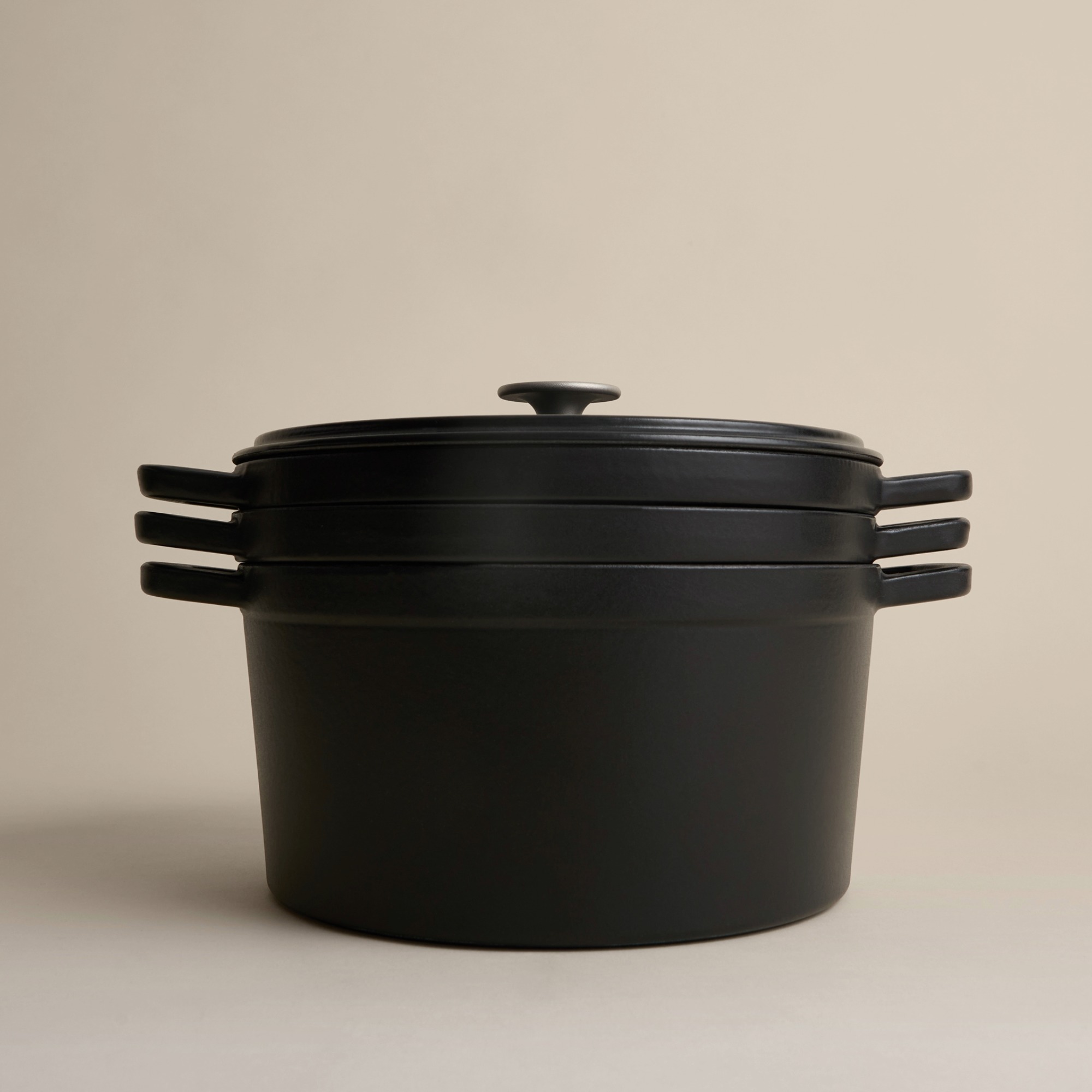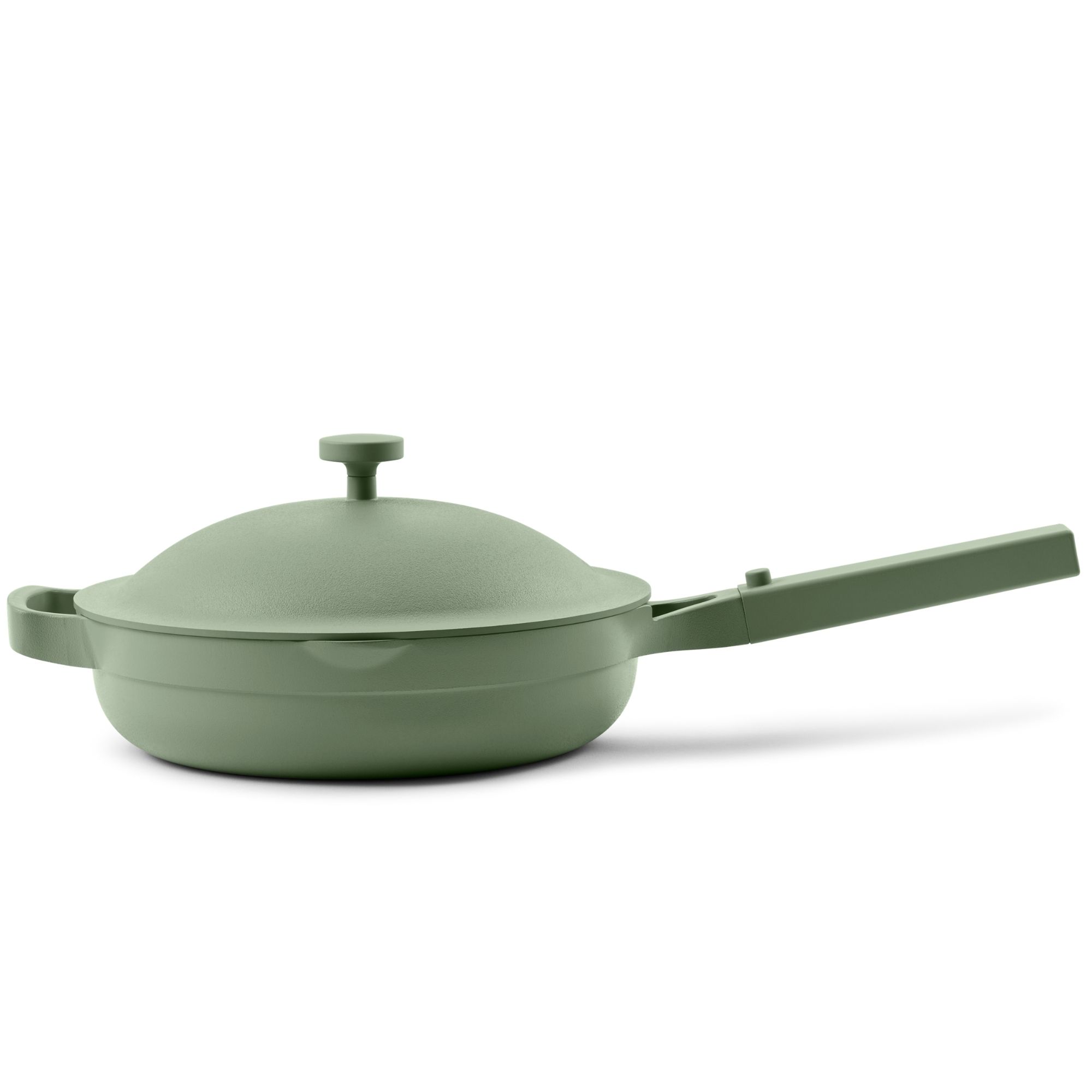Four kitchens later, I've finally found the perfect kitchen storage hack for pan lids, and it's made dinnertime easier and calmer
I finally nailed the one thing that used to drive me mad, and found a few more genius fixes along the way…
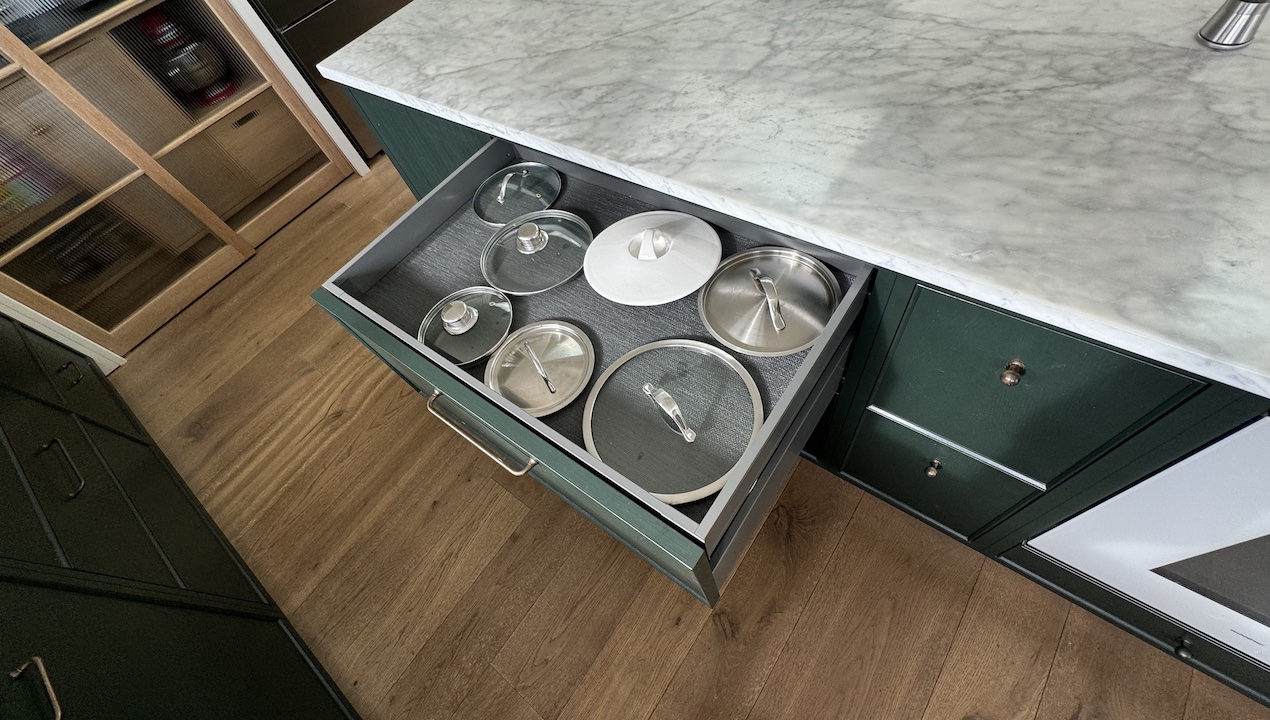

I’ve designed enough kitchens to know that even the best-laid plans can hide surprising flaws. By the time I was plotting my third kitchen, I really thought I’d cracked it on the kitchen storage ideas front. I had the dream set-up: a double-door pantry with pull-out baskets and spice racks, bins with built-in recycling sorters, and glorious double-width drawers for pots and pans. The storage of dreams, or so I thought. But there was one fail I couldn’t ignore – those feral pan lids.
My saucepans and frying pans stacked together beautifully, making the best use of every inch, but the lids? They jostled about annoyingly, forever slipping between pans or clattering onto the floor at the worst possible moment (typically when our colicky baby had finally settled). I know it’s a first-world problem, but it was the one small design oversight that regularly drove me quietly mad. So, when it came to planning kitchen number four(hopefully our last), I was determined to fix it once and for all.
I did a LOT of research, spoke to many kitchen pros and pondered various solutions involving all manner of clever trickery before finally settling on a slimline hidden drawer. Perfectly shallow, neatly tucked away, and finally capable of keeping every pan lid flat, visible and still. It’s such a simple thing, but it makes me smile, perhaps a little smugly, every time I cook.
Six smart ways I’ve tamed my pan chaos
1. The sanity-saving lid drawer

You’ll find my lid drawer tucked just above the main pan drawers within the island, and handily opposite the dishwasher. It’s a shallow pull-out, about 10cm deep, lined with a non-slip mat so each lid sits snugly and still. No balancing acts, no rattling metal.
It’s one of those unglamorous design details you don’t appreciate until you’ve lived without it. I’d never have thought something so modest could make my kitchen feel calmer, but it genuinely has. Cooking is quicker and I don’t start every meal with a clatter (and cursing).
Interior designer Louise Robinson agrees that it’s these micro-details that make or break a kitchen layout. ‘People tend to focus on the big gestures – the island, the pantry, the range cooker – but the small usability decisions are what shape how you actually live in the space. A dedicated drawer for lids might not sound exciting, but anything that improves efficiency is a win,’ she explains.
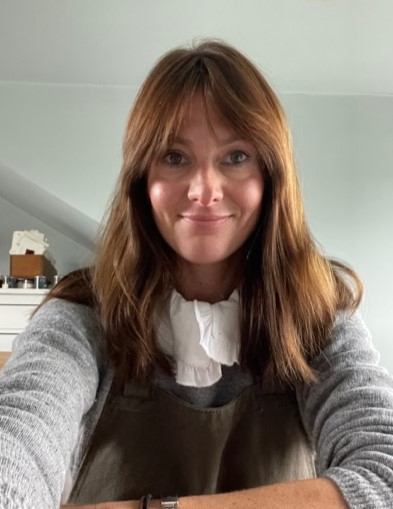
Trained at the prestigious KLC School of Design, Louise Robinson worked for several highly esteemed designers before setting up her own sought-after studio in North London. Previously a Property Lawyer, Louise has a keen eye for detail and her relaxed interiors are always filled with colour, texture and interesting moments.
2. Stack smarter with deep drawers

Once the lid issue was sorted, I turned my attention to the storage for my best saucepans themselves. I’ve always loved deep drawers for saucepans and frying pans, they’re so much more practical than cupboards, but they can still become chaotic if you’re not careful to organise your kitchen drawers.
Sign up to our newsletter for style inspiration, real homes, project and garden advice and shopping know-how
Again, I’ve lined the base with soft mats (which you can pick up on Amazon) to stop the pans from sliding around. The whole drawer liner lifts out easily for cleaning and, unlike the natural oak drawer interiors in our last kitchen, there’s no risk of those nasty black rings left by damp pans staining the timber. Each one set of pans has its own spot, which means I can grab the size I need without playing Jenga with my cookware.
Assigning every item a home is key to long-term tidiness, and your pan drawers are no exception. ‘If a space looks full, people assume it’s organised. But true organisation is about visibility and access. You should be able to see and extricate what you need quickly and easily, even in deep drawers,’ explains Louise.
3. Store oven pans in the oven
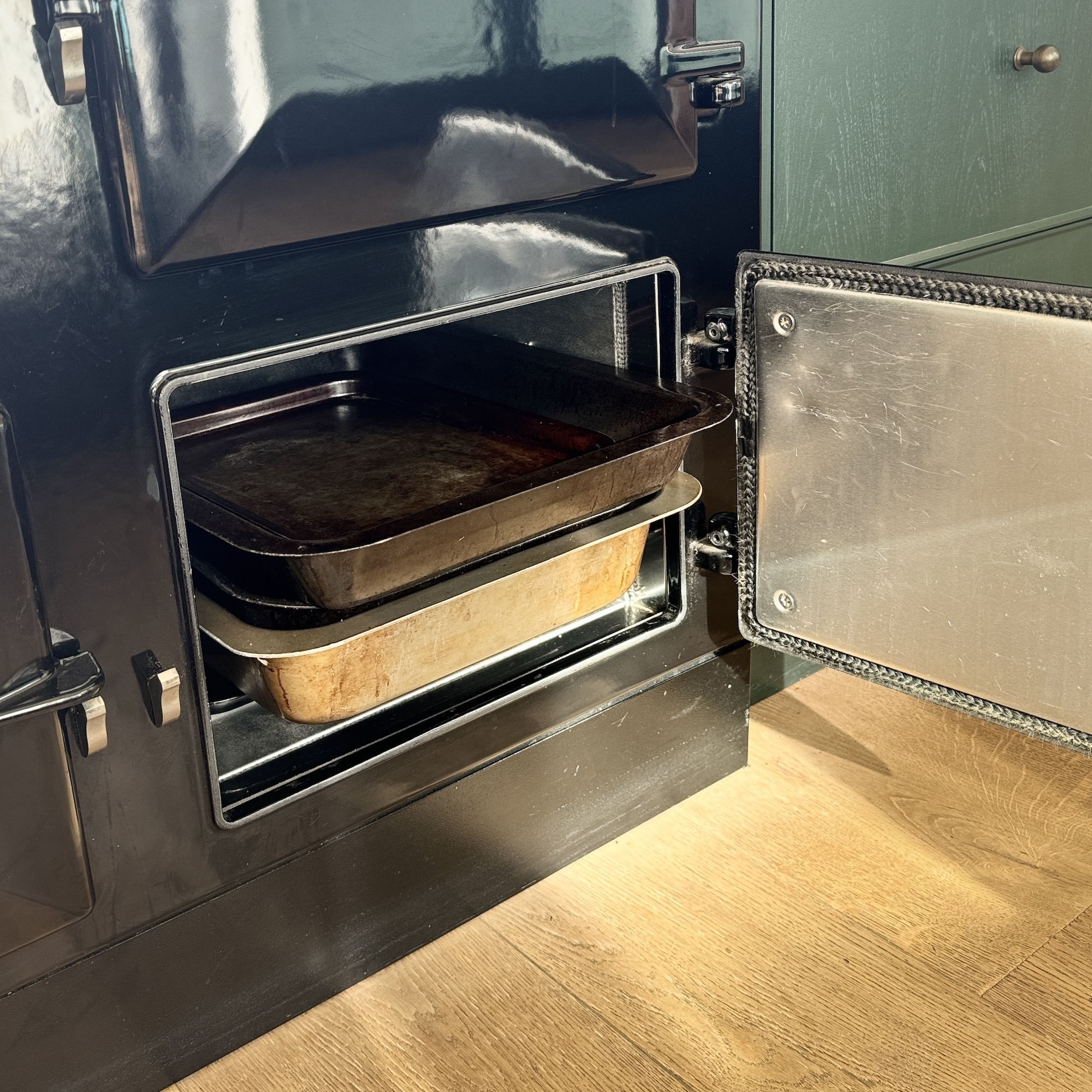
Some bigger range cookers come with a cold cavity specifically for storing roasting pans and trays. But if you’re lucky enough to have a cooker with more than one oven, chances are only one of them is in daily use. I now keep the majority of my roasting tins, baking trays and muffin pans neatly stacked in the bottom oven of my cast iron range cooker, which is only used on the very rare occasions we entertain for more than 10 guests. I can get a surprising amount in, and they stay clean, dry and perfectly accessible.
It’s a simple trick that keeps bulky bakeware from clogging up drawers or teetering in awkward cupboards. Just remember to take them out before preheating, I’ve made that mistake more than once.
4. Or stash them underneath

If you’re a single-oven household, there’s often enough room to sneak in a shallow drawer underneath. It’s an easy win for extra storage that’s frequently overlooked.
In my own kitchen, I have a single electric oven built into the island – perfect for the summer months when the range cooker is turned off – and I asked my kitchen designer (aka my husband) to add a slim drawer below it rather than waste the space on an unnecessarily deep plinth.
You’ll need to check your measurements carefully, but as a guide, a standard single oven housed within a 90cm-tall base unit usually allows for a drawer of around 25–30cm in height – ideal for flat items like baking trays, chopping boards, or, in my case, cooling racks.
5. Find alternative storage for overflow

Despite my best intentions, I still own far too many pans. The enormous stockpot for soup season, the paella pan that only appears once a year, the cast-iron griddle that weighs more than our firstborn… They don’t fit neatly in the everyday pan drawers, and I didn’t want to waste a deep cabinet just for the occasional cookware.
The solution was surprisingly simple: the dining-room sideboard. It’s open to the kitchen, so not exactly a trek, and it means the rarely used pieces still have a home, just one step removed from the daily chaos.
Professionals refer to this as the ‘second-layer storage principle’, whereby primary items used daily should be front and centre, and secondary items can live a little further out. Thinking about my kitchen in these ‘zones of frequency’ has been a game-changer when deciding what goes where and casting a few bulkier items out altogether has made the main hub of the kitchen feel calmer and more intuitive to use.
6. Keep only what you need
Lastly, and this one’s free: own fewer pans. I know, it’s not glamorous advice, but it’s the most effective space-saver there is. During my last move, I realised I’d somehow accumulated three identical saucepans and two misshapen baking trays I hadn’t used in years. I donated the duplicates, replaced one worn piece with a really good all-rounder, and suddenly my drawers felt double the size.
It’s something Louise Robinson says she encourages all her clients to do before they even start planning their kitchen storage. ‘People want clever organisers to solve clutter problems, but often the answer is just having less,’ she says. ‘Be honest about what you actually use in a normal week and adjust stock levels to suit.’
Also look for multipurpose and nesting pans, like the cult Always Pan or Lakeland's Only Pan. Stacking steamer pans are perfect for our family – we eat a lot of steamed veg, so they’re in constant use. They’re brilliant because they stack neatly in the drawer when not in use, and when cooking, you can steam multiple layers of vegetables on a single hob burner, saving both space and energy.
So, if you’re planning a new kitchen, start by asking where the daily friction lies. Is it the lids? The trays? That tangled utensil drawer of chaos? Fix just one of those irritations, and you might be amazed at how much calmer your whole kitchen feels. For me, sanity lives in a 10cm-deep drawer – I just wish I’d realised it sooner!

Linda Clayton is a professionally trained journalist, and has specialised in product design, interiors and fitness for more than two decades. Linda has written for a wide range of publications, from the Daily Telegraph and Guardian to Homes & Gardens and Livingetc. She has been freelancing for Ideal Home Magazine since 2008, covering design trends, home makeovers, product reviews and much more.
